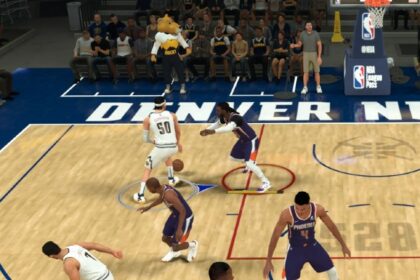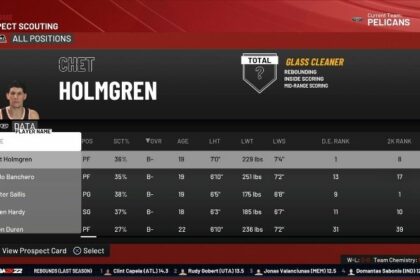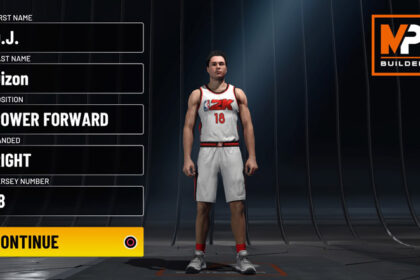Screens are a key component of basketball – they’ve been used for decades to create space for shooters, open up the paint, and get your big men open under the rim.
When you run plays or simply execute plays ran by the coach, you’ll see lots of screens taking place all over the court. But, knowing how and when to call for a screen manually can transform your offensive game and help you create 2-on-2 situations that will be difficult to deal with. It’s the first step of a pick and roll – one of the most common offensive plays in basketball.
In this article, we’ll go over how to call for a screen in 2K22.
When are Screens Useful?
Calling for a screen is effective and most often used with a skillful ballhandler, such as a point guard or shooting guard, and a strong screener, such as a center or power forward. It’s usually done around the 3PT line and the top of the key, giving both your ballhandler and screener a good position to execute the play.
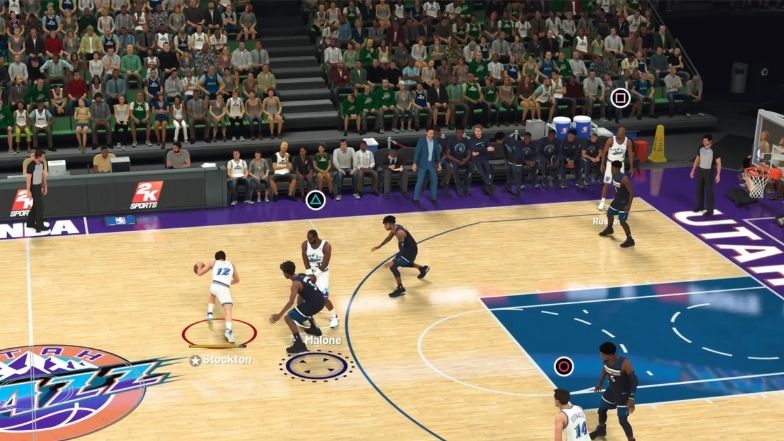
The goal of calling for a screen is to create a momentary mismatch by forcing the defender to make a decision. Once your screener is in position, one of these things will happen:
- The player guarding your ballhandler (usually guard) will switch to the screener, creating a size mismatch that works in your favor
- The player guarding your screener (usually center) will switch to the ballhandler, creating a speed mismatch that works in your favor
- The player guarding your ballhandler will go under the screen, leaving you a brief time window to shoot with your ballhandler.
Decision-making and versatility are critical when executing a pick and roll or any of its variations. You want to have a ballhandler with good passing, speed, and shooting; and you want your screener to be skilled both with the most effective post moves and in shooting situations so that you can keep the defense guessing.
How to Call for a Screen
To call for screen in 2k22, get your ball handler in position and hold L1/LB. A player – usually center or power forward that’s nearby – will move towards you and set a screen.

From there, you have several things you can do.
First, you can change the side of the screen to match the side where you want to go. To do this, click L3 (press the left stick) and the screener will switch their side.
Second, you can choose whether the screener will roll to the basket or fade for a jumpshot. This is done by tapping R1 while the screener is in position.
You can also use the slip screen, making your center/PF fake setting a screen and roll back into the lane. To do this, hold L1 to call a screen and, while your screener is coming towards you, tap L1 once to cancel the screen.
How to Call for a Specific Screen
Something advanced 2K players like to do is call for screens from specific players.
This is beneficial for several reasons. First, you might have a specific player that’s just perfect for a screener – they’re quick, strong, good inside the paint, and good shooters. This player will be a nightmare to guard in a pick and roll.
Additionally, the default screener might not always be a good choice (at all). For example, the Utah Jazz have one of the best pick and roll duos in NBA history: John Stockton and Karl Malone. If you simply call for a screen, Malone will usually come and set it. However, if Greg Foster (centre) is closer, he will come and set the screen instead. A 69 OVR center with poor finishing around the rim is not someone you want to execute a pick and roll with.
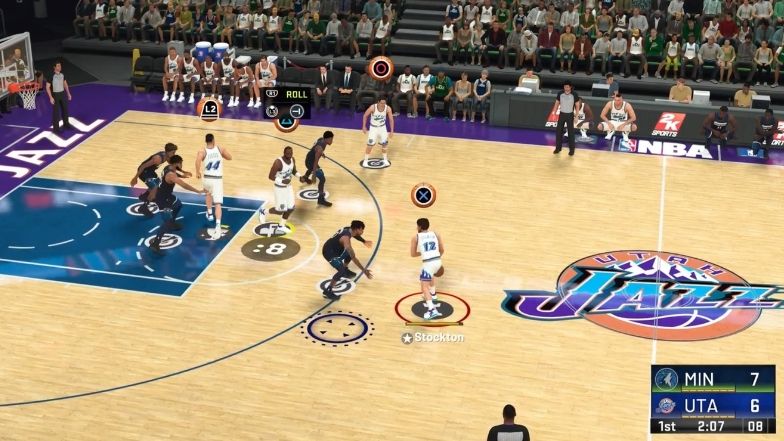
To call for a screen from a specific position, tap L1 (not hold, like when calling a regular pick). Then tap R1 – this will bring up the playcalling interface but don’t worry – just hold the icon of the player you want to set the screen and he’ll start doing it.
How to Use Screens to Score
Now, let’s go through a few situations that display how good screens can tear a defense apart.
The first is the pick and roll, the most common use of the screen. Hold L1 (or use icons to choose a specific player) and leave the default, Roll mode on. Move your ballhandler to perfectly position the defender so that he’s obstructed by the screen. Then start moving the ballhandler in the opposite direction, wait for the screener to roll, and choose the perfect moment to pass.
Here’s how we set it up:

And here’s how it ended:
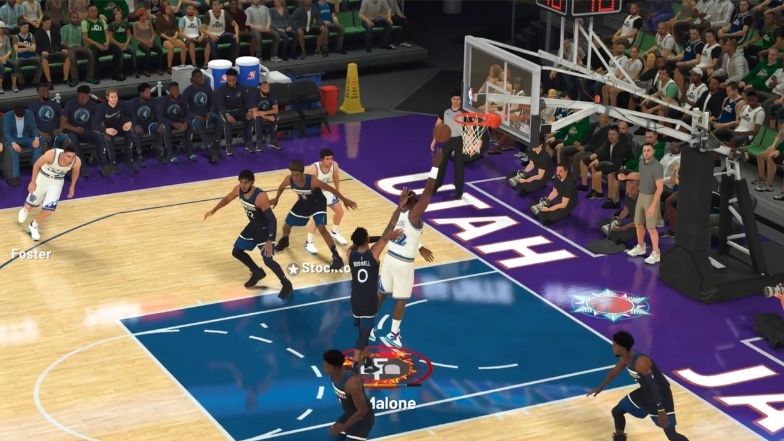
For this play, it’s best that your screener is a good inside finisher, preferably a tall and strong center/PF that can get to the basket quickly. If the play doesn’t work, you may end up with a mismatch: your PG against a center defending. Put the moves on him, create space, and take a jumpshot or learn how to do a floater – it’s a move that can be very effective in this situation.
You can also use the pick and fade, commonly known as the pick and pop. The setup is the same – position your ballhandler so that the defender is obstructed by the screen. Tap R1 to switch your screener to Fade – this will instruct him to take a few steps back and get open for a jumpshot once the screen is executed.
Then start moving towards the basket with your ballhandler, putting pressure on the inside. The defender will automatically drop down and, in many cases, the defender guarding the screener will also adjust to defend an inside basket. The screener will have space to take a shot so kick it back to him when the time is right.
This is best done with good shooting power forwards, centers, or even strong shooting forwards. The important thing is that they need to have good shooting attributes but still be strong enough to be set an effective screen.
Here is the setup:
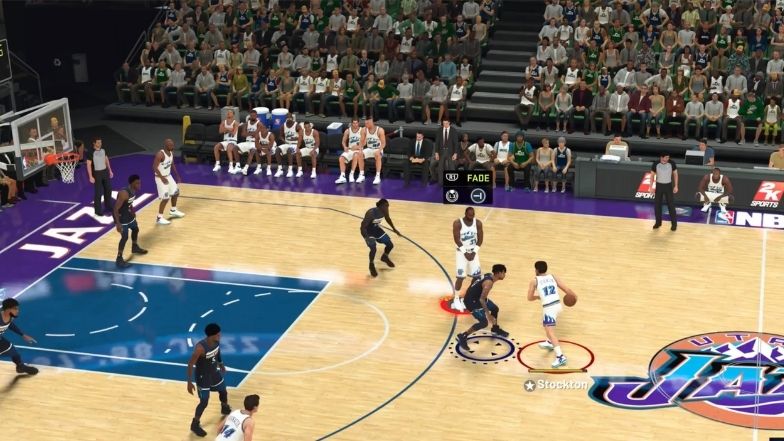
And here’s the execution:
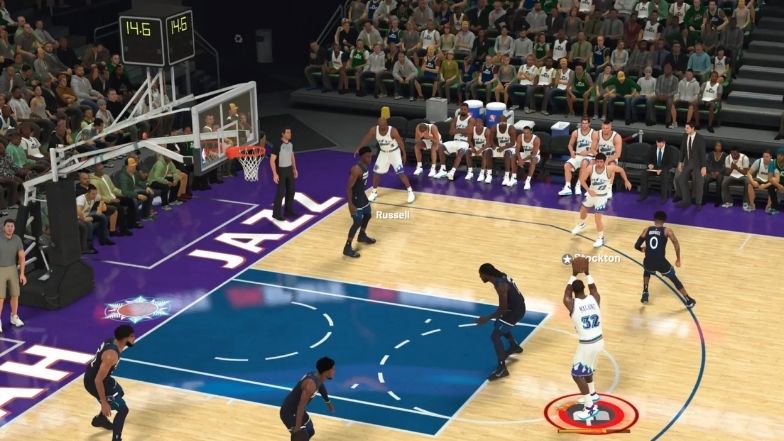
You can see that the player guarding Malone hasn’t been able to recover and is late to cover, leaving our player with an open shot when he receives the ball.
Conclusion
Knowing how to call for a screen in NBA 2K22 will be a great addition to your offensive skillset, especially when playing online or against other users. The opposition player usually won’t know whether you’ll roll, fade, or slip screen so a crafty call for screen can create lots of confusion in the defense.
Practice this play and find your favorite players to do it with.
Some of my favorite combinations include: Curry-Green (Golden State Warriors), Murray-Jokic (Denver Nuggets), Paul-Ayton (Phoenix Suns), Irving-Durant (Brooklyn Nets), Harden-Durant (Brooklyn Nets), Anyone-Antetokounmpo (Milwaukee Bucks), James-Davis (LA Lakers), Mitchell-Gobert (Utah Jazz), etc.

